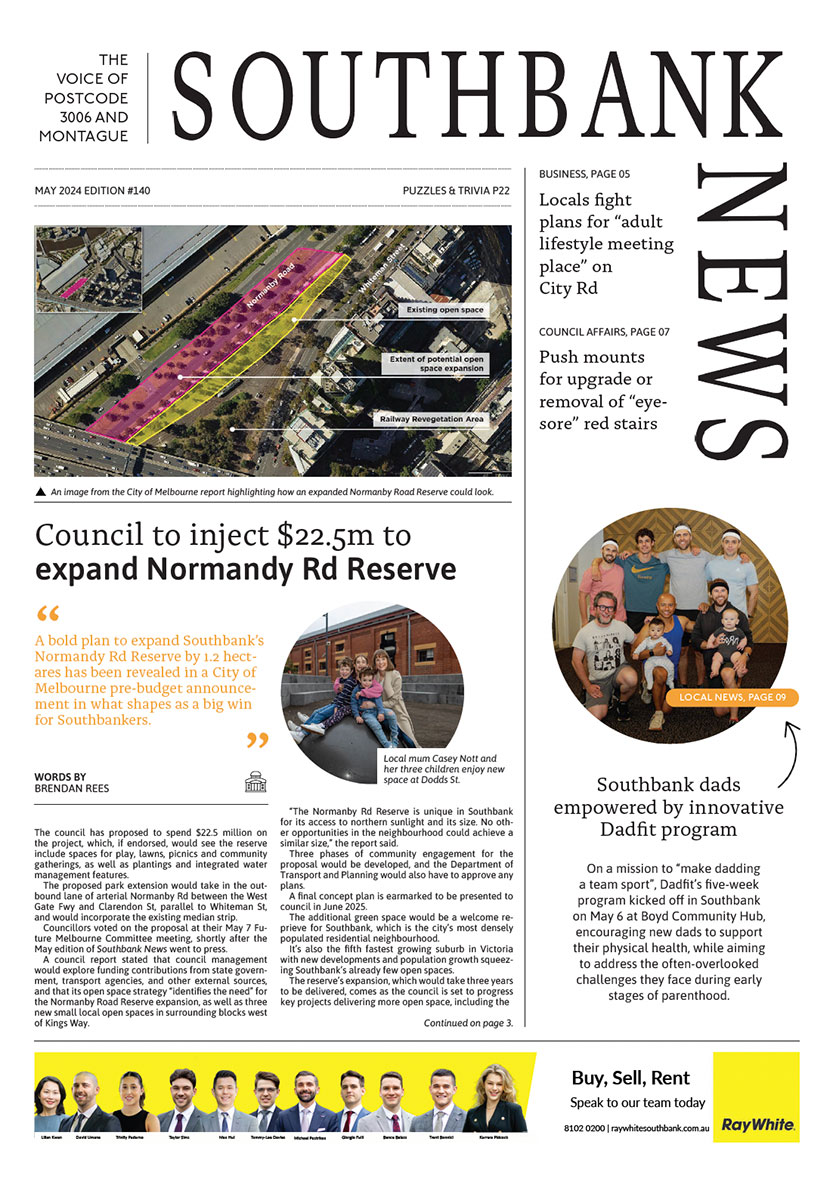
Shooting on St Kilda Rd
President, Australian Art Deco & Modernism Society The Henley on Yarra and the Prince Henry’s Hospital have both been the subject of previous articles about Southbank. But in the mid-1930s they came together in a tale of an armed robbery and murder, four lengthy (and expensive) trials, and an overhaul of procedures for identification of suspects. Melbourne was an increasingly violent city in the 1930s. Many guns were circulating in the underworld and armed robberies were common. In January 1936 a group of armed crims held up a messenger who was transporting the day’s takings from the Titles Office (corner of Queen and Lonsdale streets) to the bank. They got away with 1800 pounds and one of the crooks shot the escort of the messenger and left his body in the street. The police soon located the getaway car and the gun used in the murder, which had been modified, before arresting three crims from Collingwood 10 months after the robbery – the Davies brothers, Rupert and Geoffrey, and William Cody. But the evidence against the three was flimsy and contradictory. Much of it was concentrated on the automatic pistol used in the robbery. It had been repaired by a young man called Dugan in the weeks before the robbery, a fact confirmed by him at the committal hearing. Dugan lived in fear of retribution from the underworld if he testified as a Crown witness at the forthcoming trial. He was correct in this assessment, a view supported by the police. The week after the committal hearing saw one of Melbourne’s social highlights – the picturesque river carnival called Henley on Yarra. Dugan had enjoyed the event (and the safety accorded by the large crowd) but then chose to walk home alone along St Kilda Rd. Just near the Shrine of Remembrance, a shot rang out and Dugan was wounded in the thigh. Luckily, the wound was superficial, and he was able to reach nearby Prince Henry’s Hospital for treatment. He told police that he received the wound accidentally and would not say where, fearing that he wouldn’t be so lucky next time. The police were embarrassed that they had not provided protection, and no-one was ever charged. Dugan later testified in another matter that he had been followed for months and terrorised by underworld figures. The trio were tried four times, an extraordinary outcome. Dugan testified for the Crown at the first trial, which failed to convict the accused. At the second his testimony was severely attacked by the defence, who accused him of “romancing”. The three were convicted but the decision was overturned on appeal by the High Court of Australia. At the third trial the jury could not agree, so a fourth trial was ordered, with the same outcome. The Crown declined to conduct another trial. As a result of heavy criticism by the court, police line-up and identification procedures were subsequently changed. Dugan went on to be charged and jailed for a string of offences, before joining the Air Force in 1940 and dying after an accident at Townsville aerodrome. Thankfully Southbank is a much safer environment today •

La Camera celebrates 25 years at Southgate

New residential tower planned for heart of Southbank





 Download the Latest Edition
Download the Latest Edition